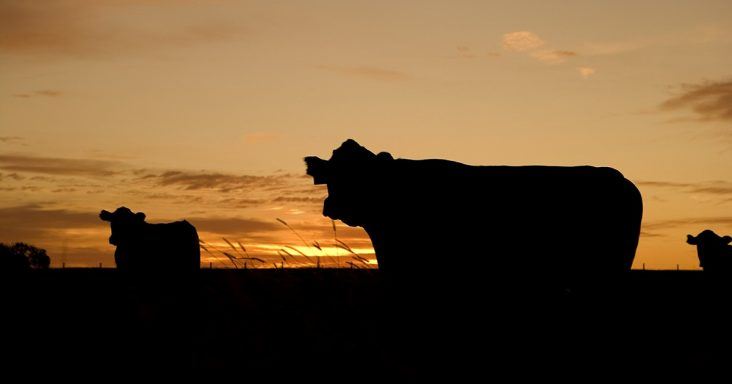U.S. cattle markets face rising grain costs with Russian invasion of Ukraine
by March 9, 2022 4:40 pm 915 views

While the fighting in Ukraine is half a world away from the U.S. the impacts are being felt in the food supply chain, according to Derrell Peel, extension livestock marketing specialist at Oklahoma State University.
Peel said the war continues to inject uncertainty into global commodity markets creating direct and indirect impacts on producers in the food chain. He said cattle markets are seeing indirect impacts from the volatile crop markets for grains which are fed to live cattle for finishing ahead of slaughter.
“Ukraine and Russia are major grain producing and exporting countries. With the reality of current disruptions of grain movement from the Black Sea region and the uncertainty of what could happen, crop prices have soared, pushing high feed prices much higher. Just a few more weeks will determine whether crop planting in the Ukraine will be possible. All crop markets are higher, but the uncertainty is focused on the near term, pushing old crop futures higher relative to new crop contracts in the fall,” Peel said.
At the close Tuesday (March 8), the May corn futures ended $2.25 cents higher at $7.53 per bushel. July futures finished $1.25 cents lower at $7.26. December futures settled 1 cent higher at $6.43.
Another concern for the beef packing and cattle feeding sectors include rising crude costs with oil rising to $127.27 per barrel, up $5.77 on Tuesday. With rising oil prices, the U.S. dollar traded lower which can have a negative impact on beef imports.
Peel said the most broad-based impact relates to volatile energy markets as Russia is a major oil producing and exporting country. The conflict is leading to potential disruptions in global energy markets and contributing to sharply higher energy prices. He said Russia is also a major exporter of fertilizer, which adds to inflationary production costs and beef demand as gasoline prices directly limit consumer spending.
U.S. meat packers are concerned that rising global beef markets could take a hit in countries that are more directly impacted from the conflict and reduce total exports of U.S. beef this year.
“All of these external factors combine with the looming threat of widespread U.S. drought on the cattle industry. In just a few weeks, the drought will begin to impact forage production and producers will face rapidly worsening production conditions and additional management and marketing challenges. The supply fundamentals of the industry will continue to be supportive with cattle numbers decreasing and beef production declining this year. Beef demand has been strong up to this point but clearly there are more concerns about demand and input prices going forward,” Peel said.
He said a war situation like this has no comparison in recent history and there is no way to anticipate when or even if the situation will stabilize.
“Producers have lots to watch in a very dynamic and volatile situation. There is little choice but to stay tuned and try to remain as flexible as possible,” Peel said.
Springdale-based Tyson Foods is the one of the largest U.S. beef packers and company share prices are down 4.85% in the past five days. Chicken prices are also running higher amid rising soybean meal and corn prices that are a direct impact to Tyson Foods’ large chicken business.
